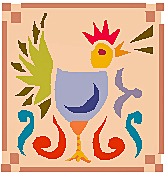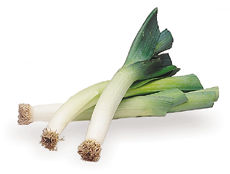This year Rosh Hashanah, Yom Kippur and the beginning of Sukkot all fall within the month of September. As usual both Ashkenazi and Sephardic traditions provide delicious dishes to help us celebrate and highlight the reasons for doing so. Here’s wishing everyone a sweet and happy New Year filled with many reasons to celebrate!
CHICKEN COUSCOUS
Claudia Roden, author of THE BOOK OF JEWISH FOOD (one of my favorites), writes about the importance of couscous in holiday cooking of North African Jews: “The night before Yom Kippur, the couscous is with chicken; during Sukkot, there are sweet potatoes and raisins in the soup; at Rosh Hashanah, there are more sweet ingredients—quinces, sweet potatoes, and yellow raisins—and nothing black—no olives and no eggplants.”
Serves 6- 8
1 TBSP canola or olive oil
12 chicken thighs, skin and fat removed, bone-in
(Choose packages with high weights to get nice big pieces.)
2 medium onions, diced
5 or 6 carrots, peeled and cut diagonally into ½” slices
½ lb white turnips, peeled and sliced ¼”thick
¼ C chopped Italian (flat-leaf) parsley
¼ C chopped cilantro
2 tsp sea salt
½ tsp fresh-ground black pepper
1 tsp turmeric
2 tsp ground cumin
½ tsp cinnamon
8 C water
½ C cooked chick-peas or 1 small can, drained
2 small zucchini, sliced ½” thick
2/3 C golden raisins
2 C low-salt non-fat chicken broth (for cooking couscous)
1 tsp sea salt
2 TBSP olive oil
2 C couscous
Chopped Italian parsley or cilantro for garnish
Heat a large flameproof casserole or soup pot and add the oil, swirling to coat the bottom. Add the chicken thighs, onions, carrots, turnips, parsley, cilantro, salt, pepper, turmeric, cumin and cinnamon. Cook over medium heat, stirring gently and often, for 15 minutes. Add the water, bring to a boil, then lower heat to moderate and simmer uncovered about 35 minutes more. (The recipe may be prepared to this point. Cool the contents of the pot and store, covered, in the refrigerator for up to 2 days. To continue cooking, reheat gently before resuming preparation.)
Add the chick-peas, zucchini and raisins to the pot and continue cooking until squash is tender but not mushy, 8 to 10 minutes.
Remove the chicken thighs and take the meat off the bones in large chunks. Discard bones and return meat to pot. Cover the pot and keep the contents warm over very low heat.
While the final additions are cooking, prepare the couscous. Bring the broth and the salt to a boil in a 2-qt. pot. Remove from the heat and add the oil and the couscous. Mix well, cover and let sit 5 to 7 minutes. When ready to serve, uncover and fluff gently with a fork.
To serve, place a mound of couscous on each plate and top with the vegetables, chicken pieces and their richly flavored cooking liquid. Garnish with chopped parsley or cilantro.
LEEKS BAKED WITH CHEESE
(Gratin de Poireaux au Fromage)
In her excellent book on Syrian Jewish food, A FISTFUL OF LENTILS, Jennifer Abadi points out that leek dishes symbolize good luck. My friend Parisian chef and teacher Françoise Meunier shared this recipe, which can be assembled early in the day or the day before serving, except for the final breadcrumbs and butter. Cover tightly and refrigerate until about an hour before you want to put it into the oven. Top with crumbs and butter and finish as described in recipe. Great for breaking the fast or for serving in the Sukkah!
Serves 6 - 8
2 lbs. leeks (about 4-8 leeks depending on size)
1 garlic clove
2 TBSP unsalted butter + extra for buttering the gratin dish
4 oz. Gruyère cheese, grated (or try Beaufort, if you can find it)
2 TBSP (or more) bread crumbs – I like Panko (kosher from Kikkoman)
Salt, freshly ground pepper and nutmeg
Preheat oven to 400°.
Trim the leeks, leaving the white and pale green part. Cut each leek into fourths lengthwise. Wash them thoroughly under cold water and drain. Cut into 2-inch lengths.
Place the prepared leeks in a soufflé dish or other microwave-safe container and cook, uncovered, on full power for 10 minutes, or until soft. Discard any accumulated liquid. (Alternatively, boil the leeks in a large pot of salted water for 5 minutes and drain well.)
Butter a ceramic or enameled cast iron gratin dish. Cut the garlic clove in half and rub the cut half all around the dish.
Put a layer of leeks on the bottom, top with some cheese and season with salt, pepper and nutmeg. Continue this layering until all the leeks are used up. Finish with a layer of cheese.
Sprinkle the breadcrumbs on top of the cheese. Cut the butter into small dice and scatter all over the top of the gratin.
Bake for 20 to 25 minutes or until the top is golden. Serve hot from the oven.
NOTE: For a good lesson on cleaning leeks, click on
http://www.youtube.com/watch?v=R8glwRaS8OM or
http://www.simplyrecipes.com/recipes/how_to_clean_leeks/
SWEET POTATO KREPLACH
I have simplified this recipe from THE WORLD AT TABLE: JEWISH FOOD by Matthew Goodman by using prepared pasta squares available in the refrigerated supermarket section featuring Asian foods. They are kosher. According to author Claudia Roden, kreplach are a traditionally served on the day before Yom Kippur or on Hoshana Rabbah (the 7th day of Sukkot) “so that kindness will cover (as the dough does the filling) any strict judgment of misdeeds.” As usual, “sweet potatoes” in popular holiday recipes are almost always yams; I prefer the garnet variety.
Makes about 30.
1 “sweet potato”, about 8 oz
2 TBSP olive oil
1 small onion, chopped
2 TBSP unsalted butter or margarine
1 tsp ground coriander
Salt and freshly ground pepper to taste
Packaged “square” wonton wrappers, trimmed so sides are equal length
1 egg beaten with 1 tsp water
Prick the skin of the sweet potato in several places with the tip of a sharp knife. Microwave it on high power to 5 to 7 minutes until it is soft throughout. (Cut it in half to check.) Scoop out the flesh into a bowl. Alternatively, peel the potato, quarter it and cook in a large amount of boiling salted water. In either case, when the potato is cool enough to handle, mash it with a hand masher or fork, cover and set aside. (This can be done a day ahead if you refrigerate the potato.)
In a medium skillet heat the olive oil over medium heat until it ripples. Add the onion and sauté until it is translucent, soft and starting to brown. Turn off the heat and add the cooked potato, butter, coriander, salt and pepper. Allow mixture to cool before filling the wrappers.
Spread out a clean dish towel or a sheet of waxed paper or parchment near where you’ll be filling the kreplach. Have ready a sheet of plastic wrap to keep them from drying out.
Even off the sides of a stack of wrappers so that all sides are a little over 3 inches. Place 1 tsp of filling in the center of one square and use your finger or a small brush to make a border of the egg mixture around the square. Lift the square and filling, pinch together two opposite corners, then seal the sides to make a triangle. (It’s easier to prevent leakage of the filling if you hold each triangle up in the air.) If necessary, the seal can be reinforced on the flat work surface by pressing the edges of the triangle with the tines of a fork. Place the kreplach on the towel and cover with plastic.
If you want to freeze the kreplach, stack them in single layers on waxed paper or parchment and store in a tightly covered container. They will just need to cook a little longer before serving.
Cook the kreplach, about half of them at a time, in a large pot of gently boiling salted water; this will take about 5 to 7 minutes for the fresh ones. Taste a little corner of one to see if the pasta is the way you like it, remembering that it will cook more in soup or in a frying pan before it’s served. When done, remove with slotted spoon or skimmer and drain. Store in covered bowl in refrigerator until ready to serve.
Add the kreplach to hot soup or follow a suggestion of Matthew Goodman and “try frying up the boiled kreplach with caramelized onions and then topping them with sour cream.” They would also be good with meat gravy if made without butter.
